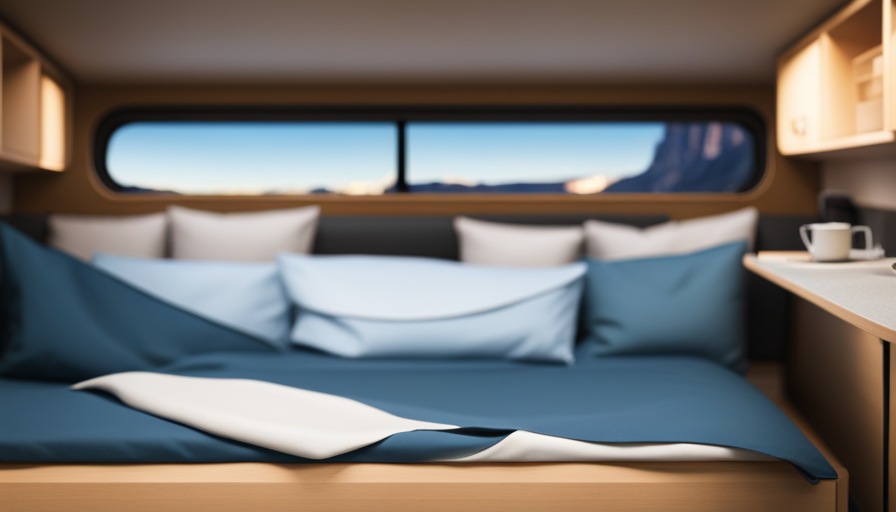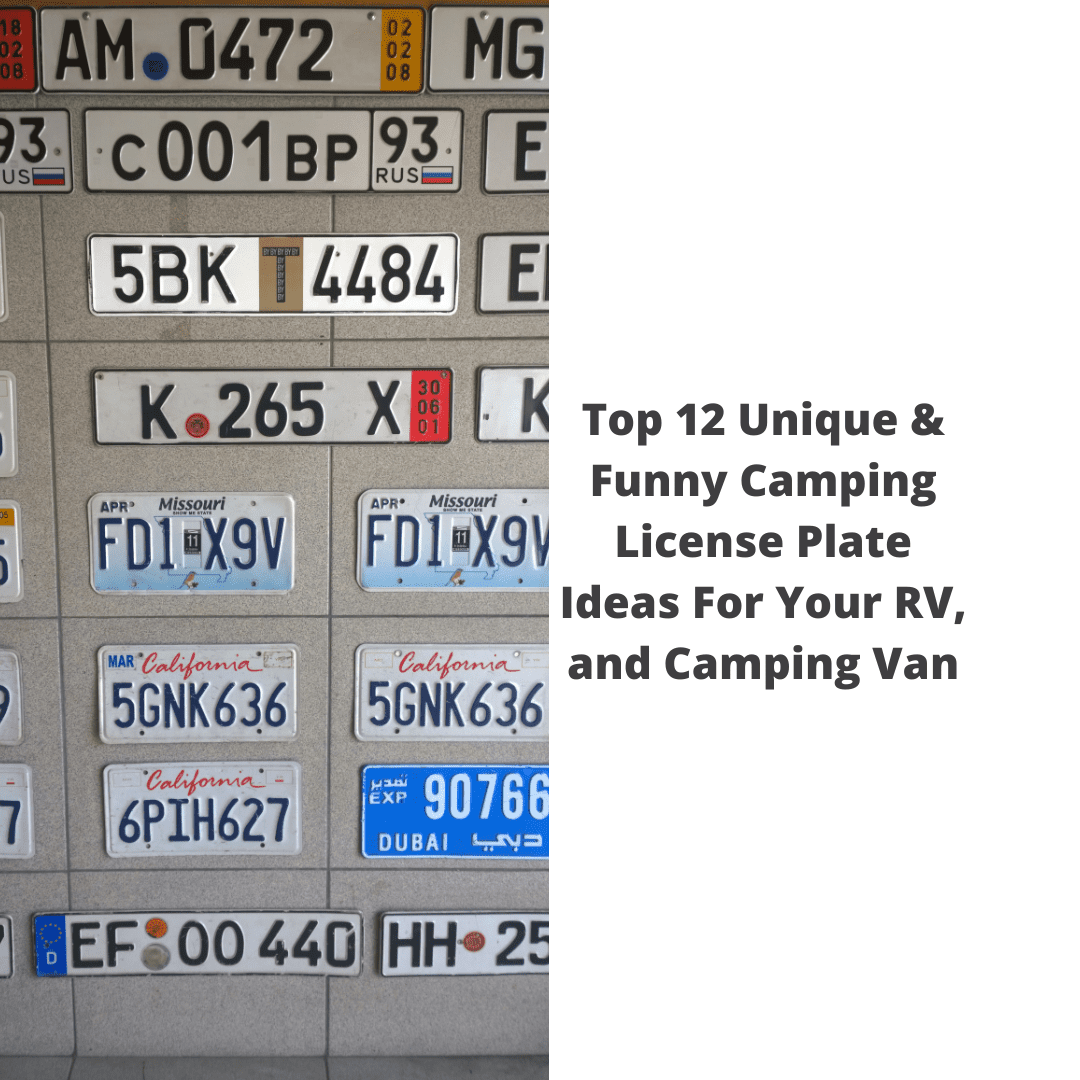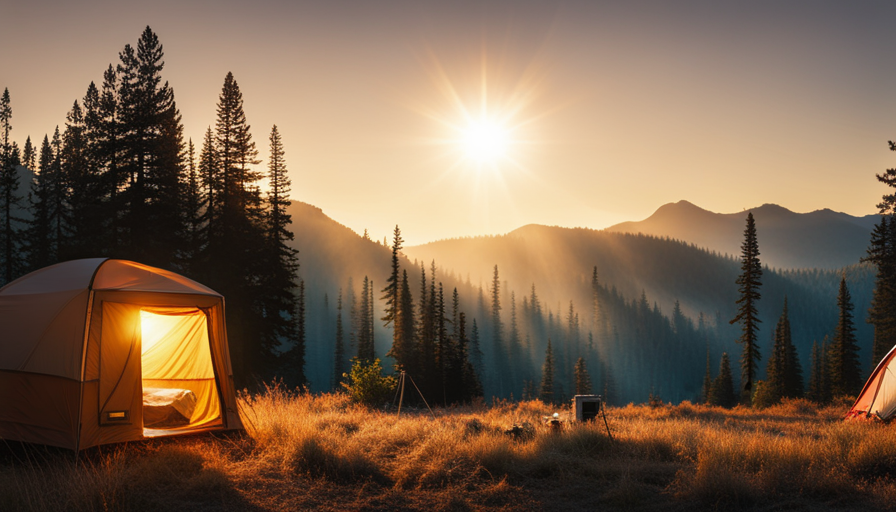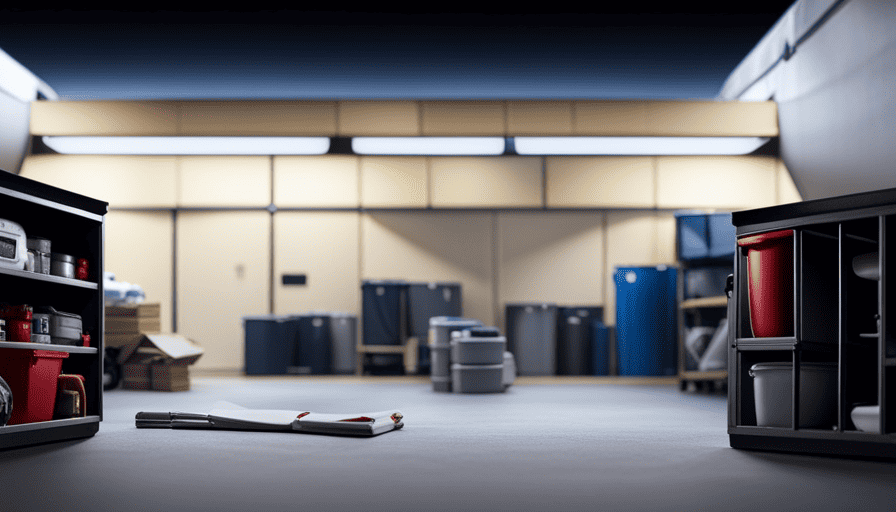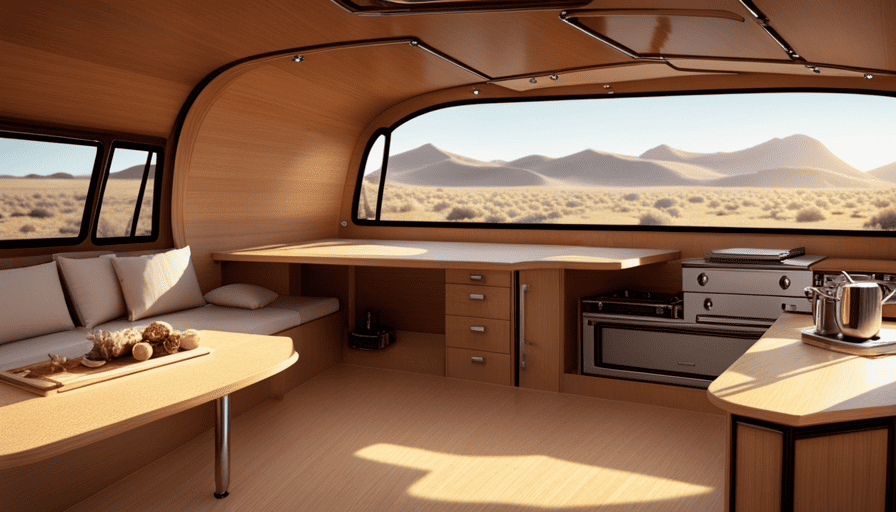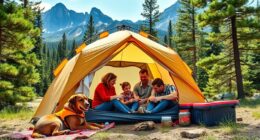The classic saying, “Home is where the heart is,” holds true for us adventurers, as our camper is our sanctuary. Whether embarking on a cross-country voyage or enjoying a quick weekend getaway, having a well-insulated camper is essential for comfort and energy efficiency.
In this article, I will guide you through the process of insulating your camper, ensuring that you stay cozy in the colder months and cool during the scorching summer days. We’ll start by assessing your camper’s current insulation and identifying any air leaks or drafts that need sealing. Then, we’ll explore options such as insulating windows, doors, and floors, as well as using insulating curtains, blinds, and reflective insulation panels. We’ll even delve into the world of insulating foam and spray insulation, along with the benefits of insulated skirting.
By the end, you’ll have the knowledge and tools to transform your camper into a comfortable, energy-efficient haven. Let’s dive in and make your camper the perfect home away from home.
Key Takeaways
- Proper insulation is essential for comfort, energy efficiency, and preventing damage to the interior of a camper.
- Addressing air leaks and drafts through caulking, weatherstripping, and insulating window frames and doors can greatly enhance the coziness and comfort of a mobile home.
- Reflective insulation panels can significantly reduce heat transfer and improve energy efficiency in a camper.
- Insulating the walls, ceiling, floors, and skirting of a camper helps create a comfortable, energy-efficient living space and can save on heating and cooling costs.
Assess Your Camper’s Current Insulation
Take a moment to feel the cool air seeping through the thin walls of your camper, and imagine the warmth and coziness that proper insulation could bring. Assessing your camper’s current insulation is the first step towards creating a comfortable living space.
Insulation effectiveness can vary depending on the type and quality of insulation used. Start by examining the walls, windows, and doors for any signs of air leaks or drafts. Look for gaps or cracks that may allow cold air to enter and warm air to escape. Poor insulation can lead to a range of issues, including increased energy consumption, reduced comfort, and potential damage to the interior.
On the other hand, properly insulated campers offer numerous benefits. They provide better temperature control, keeping you comfortable in both hot and cold weather. Insulation also helps to reduce noise levels, making your camper a more peaceful retreat. Additionally, it can prevent condensation and moisture buildup, which can lead to mold and mildew growth.
By assessing your camper’s current insulation, you can identify areas that need improvement and take the necessary steps to seal air leaks and drafts, ensuring a more energy-efficient and comfortable living space.
Seal Air Leaks and Drafts
Addressing air leaks and drafts can greatly enhance the coziness and comfort of your mobile home. To effectively seal air leaks and drafts, there are several sealing techniques and weatherstripping options available. Here are three sub-lists that will help you understand the process:
-
Sealing Techniques:
- Inspect your camper thoroughly to identify any gaps or cracks where air might be leaking in or out.
- Use a caulking gun to seal gaps in walls, floors, and ceilings with a high-quality sealant.
- Apply weatherstripping around windows, doors, and vents to prevent air from seeping through.
-
Weatherstripping Options:
- Foam tape: This self-adhesive tape is easy to apply and can seal smaller gaps around windows and doors.
- Door sweeps: These attach to the bottom of doors and create a seal when the door is closed, preventing drafts from entering.
- Rubber gaskets: These are ideal for sealing windows and can be easily installed by inserting them into the window frame.
By addressing air leaks and drafts using these sealing techniques and weatherstripping options, you can significantly improve the insulation of your camper.
Next, we’ll discuss how to insulate windows and doors to further enhance the energy efficiency of your mobile home.
Insulate Windows and Doors
To truly enhance the coziness and comfort of your mobile home, it’s crucial to ensure that windows and doors are properly insulated. One of the key areas to focus on is insulating window frames. This can be done by applying weatherstripping to the frames.
Weatherstripping is a material that seals gaps and prevents air leaks, providing an effective barrier against drafts. It is important to choose weatherstripping that’s suitable for the specific type of window frame you have. There are various types available, such as adhesive-backed foam tape, V-strip, and door sweeps. Carefully measure and cut the weatherstripping to fit the frames, and then apply it firmly, making sure it adheres well.
In addition to insulating window frames, it’s equally important to insulate doors. Weatherstripping doors can help prevent drafts and improve energy efficiency. Similar to window frames, there are different types of weatherstripping options for doors, including adhesive-backed foam tape and door sweeps. Measure the door carefully and cut the weatherstripping to fit. Apply it along the edges of the door, ensuring a tight seal when closed.
By insulating window frames and weatherstripping doors, you can significantly reduce drafts and improve the insulation of your camper. This will create a more comfortable living space and help save on heating and cooling costs.
In the next section, we’ll explore the use of insulating curtains or blinds to further enhance the insulation of your windows.
Use Insulating Curtains or Blinds
Using insulating curtains or blinds can greatly enhance the coziness and energy efficiency of your mobile home. When it comes to insulating curtain alternatives, there are a few options to consider.
One popular choice is thermal curtains, which are specifically designed to minimize heat transfer through the windows. These curtains have a thick lining that acts as a barrier, preventing cold drafts from entering and warm air from escaping.
Another alternative is blackout curtains, which not only block out sunlight but also provide some insulation benefits due to their multiple layers of fabric.
Insulating blinds, on the other hand, offer their own set of advantages. These blinds are typically made from materials that have insulating properties, such as wood or cellular shades. They create an additional layer of insulation between the window and the interior of the camper, reducing heat loss and gain. Additionally, insulating blinds can also provide privacy and light control, making them a versatile option for your mobile home.
Incorporating insulating curtains or blinds into your camper can make a significant difference in maintaining a comfortable temperature and reducing energy consumption. However, if you’re looking for even more insulation, the next step is to install reflective insulation panels. These panels are designed to reflect heat back into the camper, further improving its energy efficiency.
Install Reflective Insulation Panels
Installing reflective insulation panels can significantly improve the energy efficiency of your mobile home. Studies have shown that they can reduce heat transfer by up to 97%. Here are the benefits of using reflective insulation panels:
-
Enhanced Thermal Performance: Reflective insulation panels are designed to reflect radiant heat, preventing it from entering or escaping your camper. This helps maintain a comfortable temperature inside, regardless of the weather conditions outside.
-
Energy Savings: By reducing heat transfer, reflective insulation panels can help lower your energy consumption. This can lead to significant cost savings on heating and cooling bills throughout the year.
-
Improved Comfort: Reflective insulation panels not only regulate the temperature inside your camper but also reduce noise transmission. This creates a quieter and more comfortable living space.
-
Easy Installation: Installing reflective insulation panels is a straightforward process. Begin by measuring the dimensions of your camper walls and ceiling. Cut the panels to fit, ensuring a snug and secure fit. Use adhesive or fasteners to attach the panels to the surfaces, and seal any gaps or seams with reflective tape.
By incorporating reflective insulation panels into your camper, you can enjoy the benefits of improved energy efficiency and enhanced comfort.
In the next section, we will discuss how to add insulation to the walls and ceiling of your mobile home.
Add Insulation to the Walls and Ceiling
After installing reflective insulation panels in my camper, it was time to move on to the next step: insulating the walls and ceiling. This crucial step would ensure that the interior temperature remained comfortable, regardless of the weather outside.
To begin, I carefully measured and cut insulation boards to fit the dimensions of the walls and ceiling. I chose foam insulation boards as they’re lightweight, easy to work with, and have excellent insulating properties. Using adhesive, I securely attached the boards to the walls and ceiling, ensuring a snug fit and minimizing any gaps that could compromise the insulation.
Insulating the walls and ceiling provided numerous benefits. Firstly, it significantly improved the camper’s thermal efficiency, reducing heat loss during colder months and heat gain during hotter months. This meant that I could enjoy a cozy and comfortable living environment no matter the outside temperature. Additionally, the insulation helped to dampen noise, making the camper a quieter and more peaceful space.
With the walls and ceiling properly insulated, it was time to move on to insulating the floors.
Insulate the Floors
Once you have properly insulated the walls and ceiling, the next step is to ensure that the floors are also well-insulated. Insulating the floors of your camper is crucial for maintaining a comfortable temperature and reducing energy consumption. It helps to prevent heat loss during colder months and keeps the interior cool during hot summer days. To insulate the camper’s floors effectively, it is important to choose the right insulation material.
When selecting insulation for the floors, consider factors such as its R-value, moisture resistance, and durability. Fiberglass insulation or rigid foam boards are popular choices due to their high R-value and resistance to moisture. Another option is spray foam insulation, which can be applied directly to the floor and provides excellent thermal insulation.
To help you make an informed decision, refer to the table below, which compares the key features of different insulation materials.
| Insulation Material | R-value | Moisture Resistance | Durability |
|---|---|---|---|
| Fiberglass | High | Moderate | Good |
| Rigid Foam Boards | High | Excellent | Excellent |
| Spray Foam Insulation | Excellent | Excellent | Excellent |
Insulating the floors of your camper is an essential step towards creating a comfortable living space. Once the floors are properly insulated, you can proceed to the next section about using insulating foam or spray insulation to further enhance the camper’s insulation system.
Use Insulating Foam or Spray Insulation
To enhance the comfort of your living space, consider using insulating foam or spray insulation to create a cozy and energy-efficient environment. Insulating foam is a popular choice for camper insulation due to its numerous benefits. It provides excellent thermal insulation by creating a barrier that prevents heat loss during cold weather and heat gain during hot weather.
Additionally, insulating foam helps to reduce noise transmission, ensuring a peaceful atmosphere inside your camper. One of the main advantages of insulating foam is its ability to fill gaps and cracks, creating an airtight seal. This prevents drafts and air leakage, which can significantly improve the overall energy efficiency of your camper. Insulating foam is also lightweight and easy to apply, making it a convenient option for camper owners.
On the other hand, spray insulation, while effective, has its own set of pros and cons. One of the major benefits of spray insulation is its ability to conform to irregular shapes and surfaces, ensuring complete coverage. It also provides excellent moisture resistance, preventing mold and mildew growth. However, spray insulation can be more expensive than other insulation options and requires professional installation.
Consider using insulated skirting to further enhance the insulation of your camper. Insulated skirting acts as a barrier, preventing heat loss from the bottom of your camper. By insulating both the floors and the skirting, you can create a comprehensive insulation system that maximizes energy efficiency and comfort.
Consider Using Insulated Skirting
Boost the insulation of your living space by considering the use of insulated skirting, which acts as a protective barrier to prevent heat loss and maximize energy efficiency. Insulated skirting offers a range of benefits that can significantly improve the comfort and functionality of your camper. Here are three key advantages of using insulated skirting:
-
Heat Retention: Insulated skirting creates a sealed space beneath your camper, preventing cold air from entering and warm air from escaping. This helps maintain a consistent temperature inside the camper, reducing the need for constant heating.
-
Moisture Control: Insulated skirting helps to regulate moisture levels by blocking out excess humidity and preventing condensation from forming beneath the camper. This protects against mold and mildew growth, ensuring a healthier living environment.
-
Energy Savings: By minimizing heat loss, insulated skirting reduces the workload on your heating system, resulting in lower energy consumption and cost savings over time.
Different types of insulated skirting are available, including rigid foam panels and vinyl skirting with insulating properties. Each type offers varying levels of insulation and durability, so choose one that suits your specific needs and budget.
By incorporating insulated skirting into your camper, you can enhance its insulation effectiveness and create a more comfortable living space.
In the next section, we’ll explore how to test and monitor the effectiveness of your camper’s insulation.
Test and Monitor the Insulation Effectiveness
Ensure that your living space remains well-insulated by regularly testing and monitoring the effectiveness of your camper’s insulation. It’s crucial to evaluate the insulation’s effectiveness to ensure that it’s providing optimal thermal protection and energy efficiency.
To measure the performance of your insulation, you can start by conducting a thermal imaging test. This test allows you to identify any areas where heat may be escaping or cold air may be entering your camper. By using a thermal imaging camera, you can visually see the temperature differences and pinpoint any weak spots in the insulation.
Another way to evaluate the effectiveness of your insulation is by conducting a blower door test. This test measures the air leakage within your camper. By creating a pressure difference and using a calibrated fan, you can determine the air infiltration rate. This test can help you identify any areas where the insulation may not be properly sealed or where there are gaps that need to be addressed.
In addition to these tests, it’s important to regularly monitor the insulation’s performance. Pay attention to any changes in temperature or drafts within your camper. If you notice any significant changes, it may be an indication that your insulation needs to be inspected and potentially repaired or replaced.
By regularly testing and monitoring the effectiveness of your camper’s insulation, you can ensure that your living space remains comfortable, energy-efficient, and well-insulated.
Frequently Asked Questions
Can I use regular curtains or blinds instead of insulating ones?
Regular curtains or blinds can provide some level of insulation for a camper, but they aren’t as effective as insulating ones. The main advantage of regular curtains is their affordability and availability in various styles and designs. However, they lack the specialized features of insulating curtains, such as thermal lining or double layers, which significantly reduce heat transfer.
Insulating curtains, on the other hand, are specifically designed to trap heat and block cold air, providing superior insulation for a camper.
How much does reflective insulation cost?
Reflective insulation offers a cost-effective solution for insulating campers. When comparing costs, it’s important to consider both the initial investment and long-term benefits. The price of reflective insulation varies depending on the size and type of camper, but it generally ranges from $100 to $500.
However, the benefits of reflective insulation, such as improved energy efficiency and temperature control, can result in long-term savings on heating and cooling expenses. A cost analysis demonstrates that the initial investment in reflective insulation is worthwhile for camper insulation.
Is it necessary to insulate the floors in a camper?
Insulating camper floors is highly recommended for several reasons. Firstly, it helps to regulate temperature inside the camper, providing insulation against both heat and cold.
Secondly, it improves energy efficiency, reducing the need for excessive heating or cooling.
Additionally, insulating the floors can minimize noise transmission and vibrations, making for a more comfortable and peaceful camping experience.
Overall, insulating camper floors offers numerous benefits that enhance comfort and energy efficiency while on the road.
Can I use regular foam or spray insulation for insulating?
Regular foam and spray insulation are both viable options for insulating a camper, but they have different pros and cons.
Regular foam insulation is cost-effective and easy to install, but it may not provide the same level of insulation as spray insulation.
On the other hand, spray insulation offers superior coverage and can easily fill small gaps and cracks. However, it can be more expensive and requires professional installation.
Consider your budget and specific insulation needs before making a decision.
What are the benefits of using insulated skirting for a camper?
Using insulated skirting for a camper has several benefits. Firstly, it provides an additional layer of insulation to keep the interior warm during colder months. This can result in lower heating costs and increased comfort.
Secondly, insulated skirting helps to prevent drafts and minimize heat loss through the flooring.
Lastly, it offers protection against pests and prevents them from entering the camper.
When considering cost-effective options and alternative insulation materials, insulated skirting is a practical choice for enhancing insulation efficiency in a camper.
Can the Same Insulation Methods Be Used for Camper Trailers and Campers?
When considering insulation for your camper trailer, it’s important to understand that the same methods might not work for all campers. Factors like size, construction, and materials can vary greatly. However, to effectively insulate your camper trailer and preserve heat during colder months, explore methods such as installing foam board insulation, sealing gaps and cracks, and adding window coverings. Adapt your insulating approach based on your specific camper trailer’s requirements.
What Are the Best Materials for Insulating a Camper?
When it comes to choosing the best materials to insulate a camper, there are a few options to consider. Some popular choices include foam board insulation, fiberglass insulation, and spray foam insulation. Each of these materials has its pros and cons, so be sure to do your research before starting your insulate a camper tutorial.
Conclusion
In conclusion, insulating your camper is crucial for maintaining a comfortable interior temperature and reducing energy costs. I remember when I first insulated my camper using reflective insulation panels and sealing air leaks, the difference was astounding.
I was able to keep the heat in during cold nights and the cool air during hot summer days. It was like giving my camper a warm and cozy blanket, protecting it from the outside elements.
Don’t underestimate the power of insulation, it can truly transform your camping experience.


